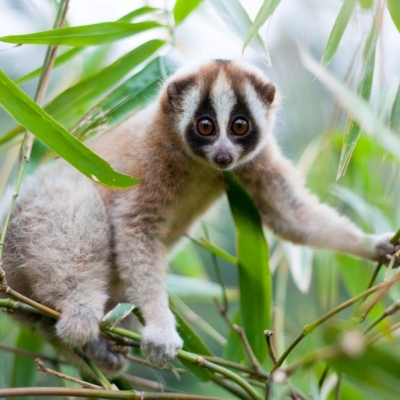
The wild water buffalo, also called Asian buffalo and Asiatic buffalo, is found in India, Bhutan, Cambodia, Myanmar, Nepal, Thailand and Vietnam. Around 3400 Asian buffalo remain in the world, of which 3100 live in India – mostly in the state of Assam.
Wild water buffalo are the largest members of the bovine tribe of cattle which include the bison, yak and the African buffalo. The wild water buffalo is almost as big as the gaur. It grows to a length of about 7 to 10 feet and weighs about 600 to 1200 kg. This species of buffalo has large sweeping horns and is larger and heavier than the domestic water buffalo. It is most likely the progenitor or ancestor of the domestic species.
Wild water buffalo are herbivorous grazers and will eat crops, grass, leaves, herbs and grass. They are found in tropical and subtropical forests and spend most of the day submerged in muddy water to keep cool. The mud, which covers their bodies, serves as a barrier to keep pests and insects away. Since they are almost always near or in water, they also eat aquatic vegetation growing in marshy areas, along the banks of rivers and even growing underwater!
The population of these buffalo is declining and they are listed as ‘Endangered’ by the IUCN. They face threats from hunting – both from humans and tigers, habitat loss, and diseases such as rinder-pest – which they get from domestic cattle that share their grazing land.
Picture Credit : Google





